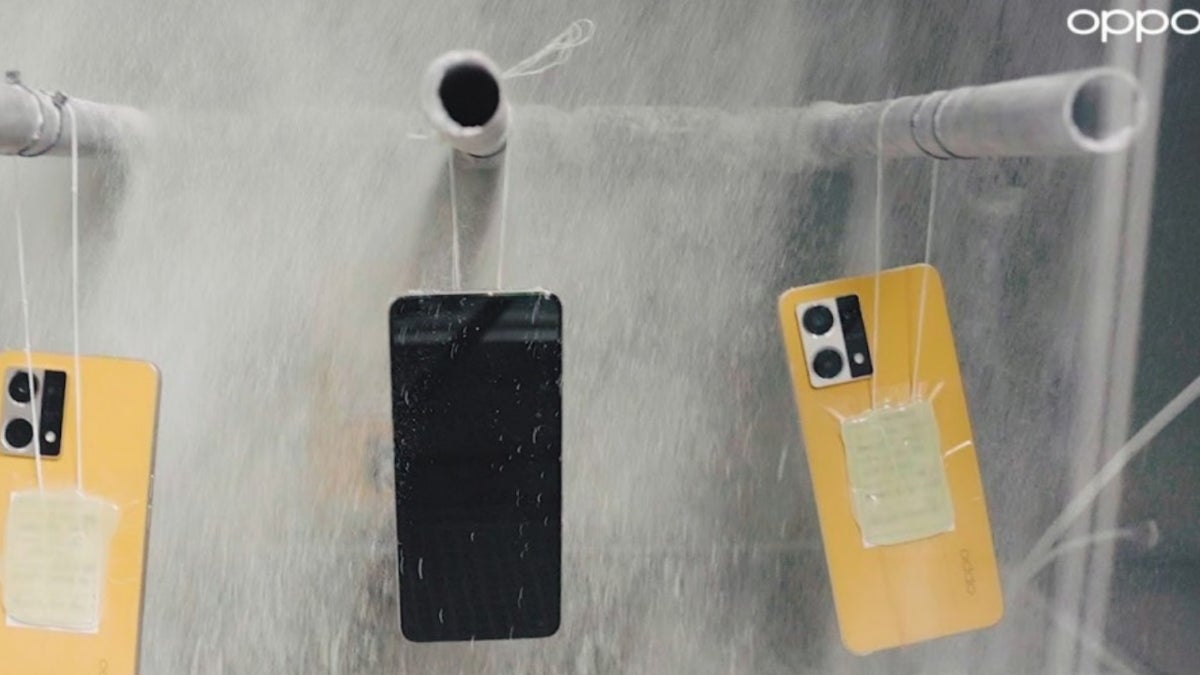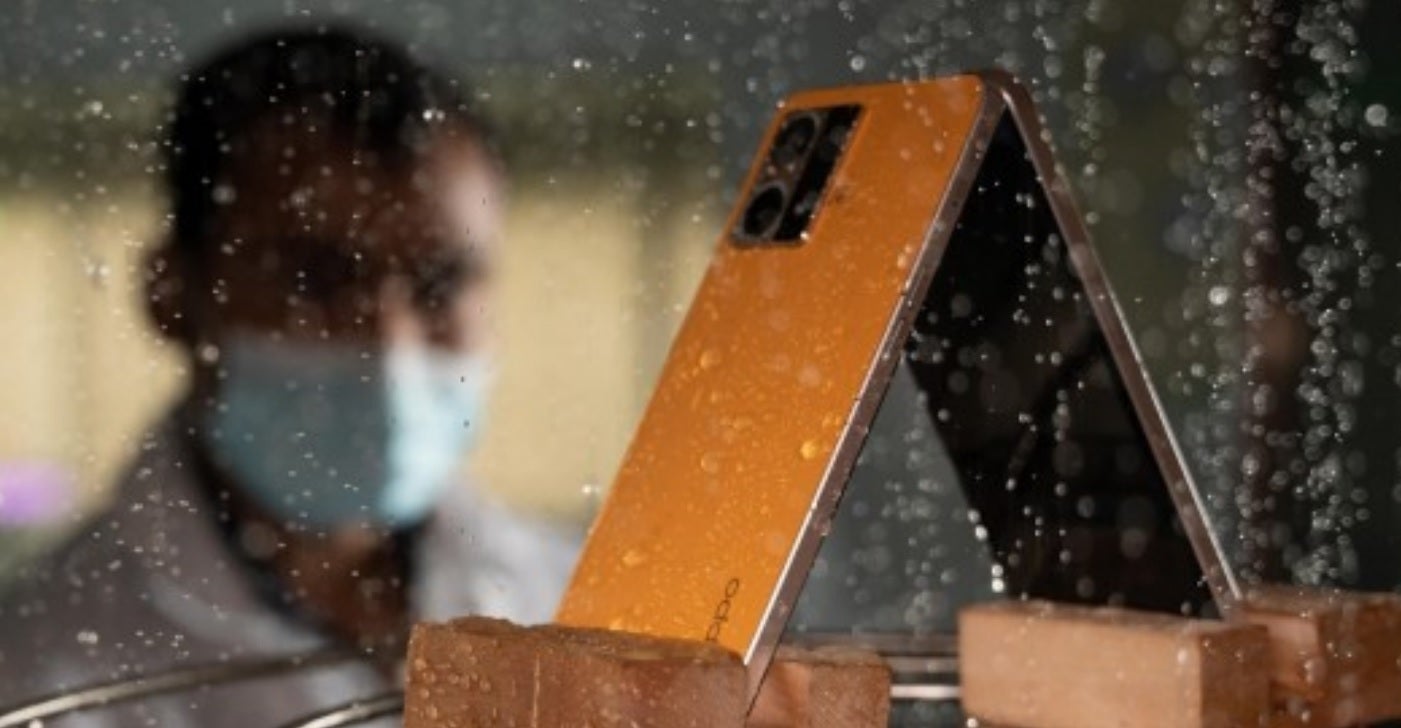Oppo puts its handsets through extreme testing to make sure they will hold up

In 2017, Oppo created the Oppo QE Reliability Lab that was opened in the company's factory in Greater Noida, India. The lab is used to make sure that certain decisions made to improve the look, feel and design of Oppo's handsets can stand the test of time. For example, the company, one of the smartphone brands owned by China's BBK Electronics along with OnePlus, Vivo, iQOOO, and Realme, unveiled the Oppo F21 Pro with a Sunset Orange leatherette back.
To find the perfect material for this back, Oppo tested several thousand different textures. Of the thousands tested, six made the cut and were sent to market research for further study. And of the six, a lychee grain leather texture was selected. Besides the time it took to find the perfect material, Oppo had to come up with the manufacturing process used to actually build the F21 Pro with the "Sunset Orange" leatherette back.
To test the durability of the fiberglass-leather material used for the back panel, Oppo rubbed it with an alcohol-soaked pad 5,000 times, a rubber eraser 10,000 times, and a piece of denim 200,000 times. This testing is done to make sure that the phone's materials can last through years of daily wear and tear along with accidents. Not only does the lab collect data on how much wear and tear a handset can put up with before it breaks, Oppo also learns about what causes cosmetic damage on the phone.
The quality of OPPO products is one of our top priorities.
— OPPO India (@OPPOIndia) April 29, 2022
The #OPPOF21ProSeries adopts IPX4 standard for water resistance testing and they are also placed underwater at a depth of 20cm for 30sec to deliver #OPPOQualityPromise.
Buy now: https://t.co/pCd5DDpcte pic.twitter.com/L2t7LD2o3R
The leatherette test is specific to the Oppo F21 series only while some of the other tests mentioned in this story are used on all Oppo smartphones. Oppo rear cameras are tested with a ring of RGB lights that are used to test the rear cameras to make sure that they have a lifespan of over 50,000 hours.
A drop test is also performed, but at a distance of 1meter (approximately 3.34 feet) instead of the .8m fall that is industry standard. The drop tests consist of falls on all six sides, eight corners, and 12 edges a total of 12 to 24 times. And the very last test is made up of three 1.5meter drops (5.01 feet).
To check the damage to the phone's body from falls on an abrasive surface, Oppo drops its phones on sandpaper for a short distance without using a screen protector or a case. To simulate more drops, the phones are placed in 1m cases that spin at 3.5 revolutions per minute. After 150 revolutions, the wear and tear on the phone from spinning is equal to 150 drops from 1m.
Next comes the rain test with Oppo aiming for a water resistance rating of IP X4 which means that the phone is resistant to splashes of water from any direction. The "X" means that there is no rating on dust resistance. To earn that IP X4 rating, Oppo simulates a heavy rainfall by putting the devices under simulated rainfall at a rate of 10 liters per minute, falling at 75°.
At OPPO, our products go through rigorous testing processes to deliver the best quality in all aspects and the stunning #OPPOF21ProSeries has successfully completed it all, providing you with a #OPPOQualityPromise.
— OPPO India (@OPPOIndia) April 29, 2022
Buy now: https://t.co/pCd5DDpcte pic.twitter.com/6nhXZRhVGP
The phones are then dunked in 20cm of water (7.87 inches) for 30 seconds and then wiped dry. After three days, Oppo disassembles the test unit to make sure that no water came in contact with the internals corroding them. Humidity can also damage handsets so the phones go into a chamber for 14 days with the power both off and on. Relative humidity is at 95% with the temperature at 65 degrees C (149 degrees Fahrenheit).
Since saltwater is more corrosive than regular water, the Oppo handsets are splashed with water made up of 5% salt while kept in a damp environment with 95% relative humidity and a temperature of -50 degrees Fahrenheit. To pass this test, the phone must remain fully functional and show no signs of external damage.

Oppo rigorously tests its smartphones
Oppo runs its temperature shock test for 300 hours, four times longer than the industry standard of 75 hours. This test checks to see whether the phone can continue to run after being exposed to temperatures in a range of 167 Fahrenheit to -40 degrees Fahrenheit. And the Oppo F21 series must pass the sweat test which has the phone wrapped up in a cloth soaked with artificial sweat for a 24-hour period.
With consumers holding on to their phones for three years and longer these days (up from two years), manufacturers need to make sure that their phones can handle being handled for so long.
Follow us on Google News










Things that are NOT allowed:
To help keep our community safe and free from spam, we apply temporary limits to newly created accounts: